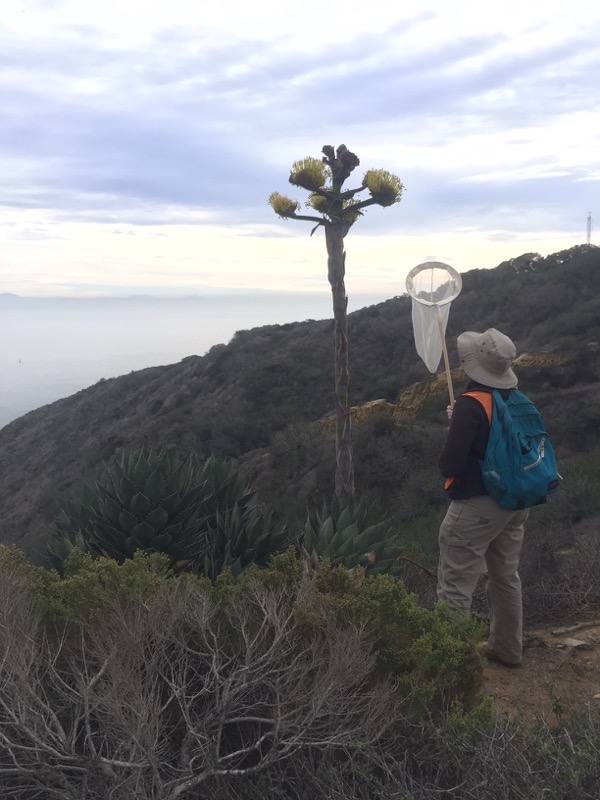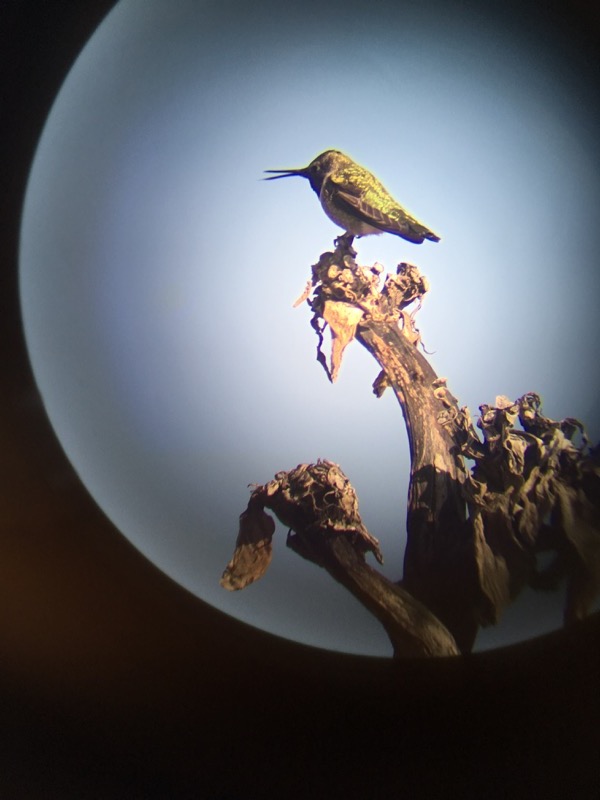As it stands, the ecosystems of Cabrillo National Monument are relatively closed off from the rest of San Diego. Due to the natural barriers of water and the human barriers of urbanization, we are considered an “ecological island.” Regardless of their protection within our boundaries, this can be a problem for many species that rely on others for survival.

The Shaw’s Agave is a critical example of this theory. Historically, these plants have relied on the Mexican Long-tongued Bat as their primary pollinator. Our bat detectors throughout the park can attest to the reality that these animals do not make it to our “island.”
In collaboration with the U.S. Navy and the SDNHM, Annika is helping us investigate other potential pathways for agave pollination. Throughout the Spring and Winter months she monitors a wide variety of visitors to the Shaw’s that forage on it’s nectar and pollen resources.
Nabors recounts her recent observations, “In all, I found 24 different species of beetles, flies, native and non-native bees, and ants. The fly diversity was the most remarkable: out of only 22 fly specimens taken, I found 17 species in 11 families. For the bees, honeybees were the most common by far. Even though honeybees are an introduced species in the United States, they are extremely common in feral hives and can sometimes make up 80 to 90 percent of floral visitors to native plants in San Diego County. “

Most of the insects detected were feeding on nectar or pollen, rather than landing on the stigma (the female part of the flower). Despite the all-day bustle of insects around agave flowers, Nabors believes they might not provide much pollen to pollinate the stigma and help agaves produce seeds. Although biologists still don’t know for sure what effect insect visitation has on Shaw’s agave, these observations suggest that insects might contribute relatively little to successful agave reproduction.
We invite you to stay tuned as more on this story develops. Special thanks to Annika Nabors and the entomology team at the San Diego Natural History Museum for their critical work here at Cabrillo National Monument.
